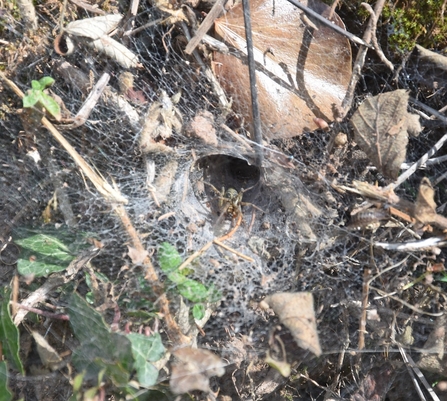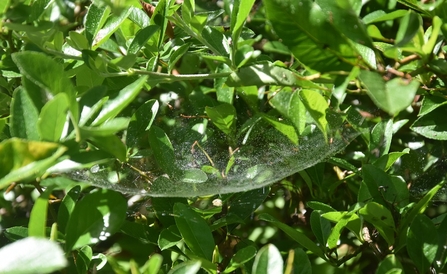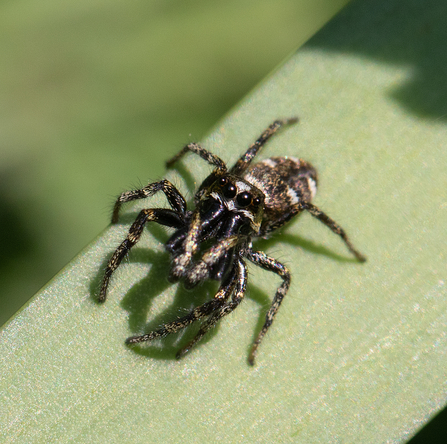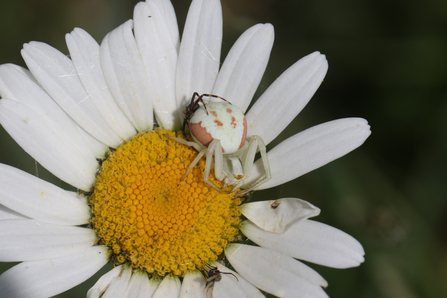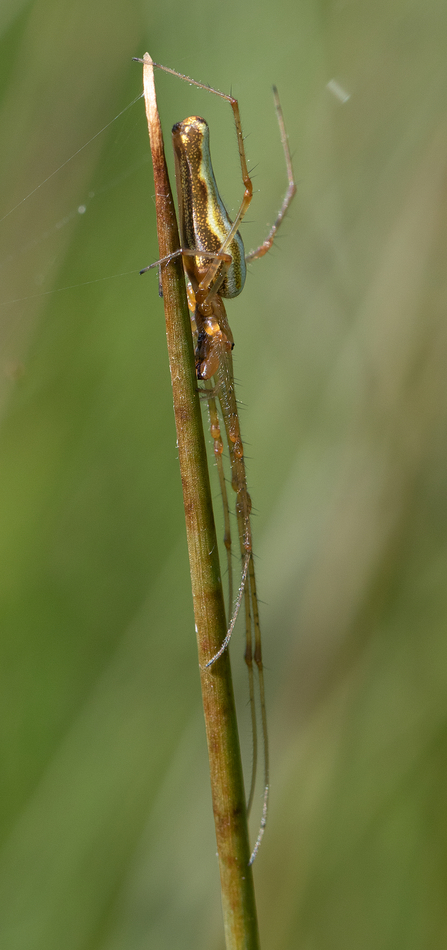Here are some more Spiders and webs to look out for.
A variant on the Orb web is a web, often less tidy, with an obvious funnel either in the corner or centre.
Sometimes the funnel will connect with a hole in the ground or a wall, others will be anchored to vegetation. The most likely place to find the spider is in the funnel: we found a striking group of them beside the car park for Gwent Wildlife Trust’s New Grove Meadows with the spiders sitting at the mouth of the hole, in the warm sun, until our movement sent them dashing underground.


